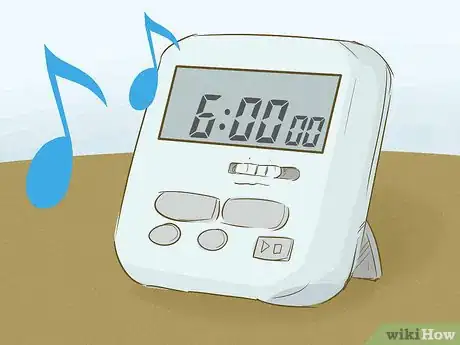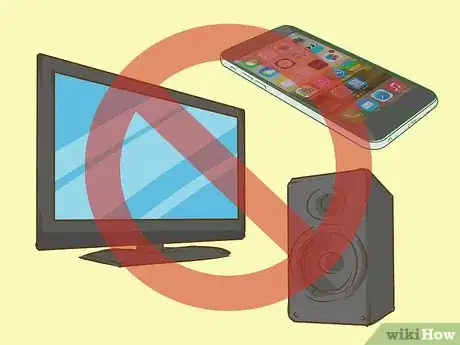This article was co-authored by wikiHow Staff. Our trained team of editors and researchers validate articles for accuracy and comprehensiveness. wikiHow's Content Management Team carefully monitors the work from our editorial staff to ensure that each article is backed by trusted research and meets our high quality standards.
wikiHow marks an article as reader-approved once it receives enough positive feedback. In this case, 97% of readers who voted found the article helpful, earning it our reader-approved status.
This article has been viewed 395,421 times.
Learn more...
The Ishraq prayer (also known as Duha) is an optional prayer for Muslims to perform just as the sun rises. You can perform the Ishraq prayer to make up for wrongdoings, but many people choose to pray Ishraq because of the good deeds that it’s said to stand for. Performing Ishraq is as easy as any other prayer and can greatly benefit your spiritual well-being!
Steps
Waking Up to Pray
-
1Set an alarm to wake up for the Fajr prayer, thereafter remain seated and recite Dhikr until the time of Ishraq. The Ishraq prayer is an optional prayer, or salah, that is done about 15-20 minutes after the sun rises. Before you go to bed, research what time the sun will rise in your city for the next day, and set an alarm for that time.[1]
- If you lose track of time, just look at the position of the sun over the horizon. If the sun is completely risen and no parts of it appear to be touching the horizon, you can begin your prayer.
-
2Get rid of anything in the room that might distract you. While you’re praying, you should be extremely focused and not thinking about anything other than the task at hand. Remove your phone from your room, turn off the television, and take a moment of complete silence to center yourself.[2]
- It’s okay to have a fan running or noise in the background if you can’t turn it off. Just be sure to work on blocking out the noise while you’re praying.
Advertisement -
3Perform wudu to prepare your body for salah. In Islam, you have to be pure before praying. Since you’ve just woken up to say Ishraq, you’ll have to clean yourself before praying. Wudu includes washing your hands, mouth, face, arms, hair, and feet three times each.[3]
- Wudu must be performed in the specific ritual order, starting with the hands, then moving to the mouth and face, then lower arms, then the hair, and then the feet.
- You only have to wash your hair once, from the forehead to the back of the head.
-
4Turn your body to face Qibla. In Islam, worshippers face the Holy Mosque in Mecca while they are praying. It’s a very special place of worship for Muslims around the world, and is the location of the Kaaba, an important relic.[4]
- If you’re not sure what direction to face, try downloading a “Qibla compass” app on your phone. This is a modified compass that points in the direction of the Holy Mosque.
- In the United States, many people disagree on what direction they should face to say prayers, but most North American Muslims face North East when they pray.
Saying the Ishraq Prayers
-
1Consider your intentions for saying Ishraq. It’s important to understand your reasons for praying. Think about how many rak'ahs you will perform and why you’re doing them. [5]
- You can say “I pray two rak'ah Ishraq for Allah while facing toward Kaaba.”
- Some people pray Ishraq because they have sinned, but others pray it because they feel it’s a way to start the day on a positive note.
- Your intention could also be something like “Today is a holiday, and I am performing Ishraq prayer to encourage good deeds in the world in the name of Allah.”
- Alternatively, your intention might be something like “Yesterday, I had a bad day and committed a sin. I am performing Ishraq prayer to make up for the negative actions I took.”
-
2Start the prayer. Read Surah Fatiha and another surah. Bow down into ruku, and then prostrate into sujood.[6]
- Be sure to say the surahs in Arabic because they come from the Quran. Personal prayers can be said in your native language.[7]
-
3Do another rak'ah. When you start the second rak'ah and return to the standing position, recite the Surah Fatiha again. Recite another surah, and then, continue with the rak'ah.[8]
-
4Say as many rakats as you feel are necessary. Ishraq only requires you to perform two rakats for your prayers, but you can say more if you want to. Many Muslims believe that Ishraq is a very powerful prayer, so doing more rak'ahs can help you to achieve your intention for the prayer.[9]
- Most people say an even number of rakats for Ishraq, even if they perform more than the required amount.
Community Q&A
-
QuestionIf I decide to perform more than two raqaas, how do I do it? In sets of 2 raqaas, or continuously one after the other?
 Community AnswerYou do it in sets of 2 raqaas, that's how most non-faridah prayers are performed.
Community AnswerYou do it in sets of 2 raqaas, that's how most non-faridah prayers are performed. -
QuestionAssalam Alaekum. Why are women not allowed to enter the mosque to perform Ishraq?
 SobiTop AnswererThat depends on the mosque. Facilities for women may not be available or may not be open at that time. Islam does not forbid women who want to pray at the mosque, but it encourages them to pray at home. Contact your mosque to find out if they offer such facilities.
SobiTop AnswererThat depends on the mosque. Facilities for women may not be available or may not be open at that time. Islam does not forbid women who want to pray at the mosque, but it encourages them to pray at home. Contact your mosque to find out if they offer such facilities. -
QuestionWhen should I pray Ishraq prayer? Is it before or after Fajr?
 SobiTop AnswererThe time for performing Salah al-Ishraq commences approximately twenty minutes after sunrise, when the sun is above the horizon approximately the length of a spear and the sun becomes so bright it becomes difficult to look at directly. It ends at mid-morning (halfway between sunrise and zenith).
SobiTop AnswererThe time for performing Salah al-Ishraq commences approximately twenty minutes after sunrise, when the sun is above the horizon approximately the length of a spear and the sun becomes so bright it becomes difficult to look at directly. It ends at mid-morning (halfway between sunrise and zenith).
Warnings
- If you’re a woman, be sure to say Ishraq at home. Women are not allowed to pray Ishraq at a mosque.⧼thumbs_response⧽
References
- ↑ http://sunnirazvi.net/practices/prayers.htm
- ↑ https://sufism.org/salaat/salaat-times-2
- ↑ https://www.alislam.org/library/book/salat/prayer-offered-in-abnormal-circumstances/
- ↑ http://www.islamicacademy.org/html/Learn_Now/English/Salah_In_Audio.htm
- ↑ http://www.islamicacademy.org/html/Learn_Now/English/Salah_In_Audio.htm
- ↑ http://sunnirazvi.net/practices/prayers.htm
- ↑ https://sufism.org/salaat/salaat-times-2
- ↑ http://sunnirazvi.net/practices/prayers.htm
- ↑ http://www.themodernreligion.com/basic/charac/easy/ishraq.html
About This Article
Start your Ishraq prayer standing and facing the Qibla while you consider your intentions for the prayer. Once you are ready, begin the first rak'ah. After reciting Surah Fatiha, recite another surah. Then, complete the first rak'ah and move into the second rak'ah, repeating what you did in the first rak'ah. You can repeat as many rakats as you’d like before finishing your prayer. For more tips, including deciding when to start Ishraq, scroll down!

































































